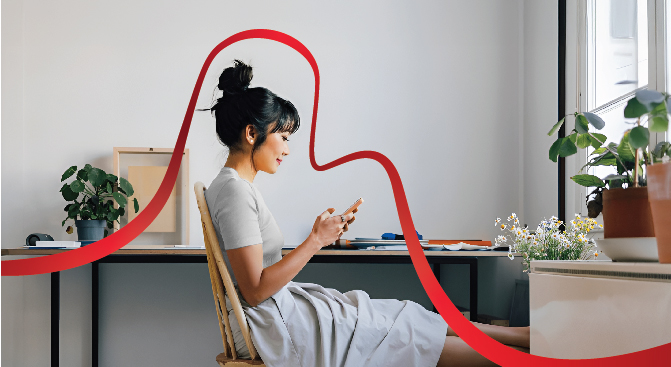
4 Reasons Why Dancing is a Shortcut to Better Mental Health
Dancing has always been a part of our culture, from traditional rituals to celebrations, it is something that widely appeals to people from all walks of life. It is also highly associated with good physical health, but most people don’t know that dancing can affect their mental health, too.
Whether it’s salsa, ballroom, folk, modern jazz, hip-hop, or just freestyle movements, dancing can give people these benefits:
Improves mood
Dancing and other movements allow a person to express themselves and let loose. When a person feels free, the body releases happy hormones like dopamine. This hormone helps lift a person’s mood and alleviate the symptoms of anxiety and depression. [1]
A 2007 study found that aside from boosting energy and mood, dancing, specifically hip hop, lowers levels of stress just like when participating in forms of aerobic exercise. [2]
Moreover, experts found that people who engage in dances that involve the sense of touch show a significant reduction in the levels of stress and anxiety, hence improving overall mental well-being. [3]
Helps eliminate social anxiety [3]
Dancing makes people “loosen up” and feel less self-conscious when interacting with others. These benefits can especially help people who suffer from social anxiety.
This is why over the years therapists have prescribed dance to people suffering from social anxiety and a fear of public speaking.
Salsa, hip hop, freestyle, and ballroom are some of the dances that highly promote social confidence.
Reduces the chances of mental health disorders [4]
Dancing enhances the brain’s networking and transmission of chemicals, which help in the stabilization of mental health. Improved transmission of chemicals reduces the chances of mental health disorders.
Boosts memory [5]
In dancing, a person needs to focus on the constant changing of movement and remember all the moves and patterns. Remembering choreography makes dancing a great form of therapy for improving memory, creativity, and learning ability.
Ballroom, hip hop, and contemporary are the usual dance styles that boost mind power.
Considering including dance in your daily routine? Here are some simple tips to consider:
-
Take an online dancing class. If we’re not in a pandemic, going to a gym or any local fitness center would be the best option. But because physical distancing must still be observed during these times, signing up for online dance classes is a good alternative. This helps people be more consistent with their dancing routine because classes have a specific schedule.
-
Practice Zumba at home. Dancing by oneself is the easiest and most affordable choice. There are tons of Zumba or other pre-recorded dancing sessions online that anyone can follow at home. With this, one should set a continuous reminder so that it becomes a part of his/her routine.
-
Have a party for one. Loud and feet-stomping music typically welcomes people when entering a club -- which usually prompts clubbers to dance and let loose [6]. A person can replicate this environment at home by staying inside a room with some moderate to loud music. This can even be done with a friend, virtually. This allows people to express themselves freely and at any time.
Dancing is just one of many things that can help you practice a healthy and happy lifestyle. Though it offers a lot of benefits for both mental and physical well-being, consulting a mental health professional is still the best way to understand and manage feelings of anxiety or depression.
---
References:
1. Douka S, Zilidou V, Lilou O, Manou V. Traditional Dance Improves the Physical Fitness and Well-Being of the Elderly. Frontiers in Aging Neuroscience. [Internet] 2019. [cited 30 March 2021] Available from: https://www.frontiersin.org/articles/10.3389/fnagi.2019.00075/full
2. Jingu K, Sungwoon K. Mood after Various Brief Exercise and Sport Modes: Aerobics, Hip-Hop Dancing, ICE Skating, and Body Conditioning. SAGE Journals. Perceptual and Motor Skills. [Internet] 2007. [cited 30 March 2021] Available from: https://journals.sagepub.com/doi/abs/10.2466/pms.104.4.1265-1270
3. Salo A. The Power of Dance: How Dance Effects Mental and Emotional Health and Self-Confidence in Young Adults. The University of Northern Colorado. [Internet] 2019. [cited 30 March 2021] Available from: https://digscholarship.unco.edu/cgi/viewcontent.cgi?article=1192&context=theses
4. Goodill S. The Evidence Base for Dance/Movement Theraphy in Mental Health Moving the Body of Knowledge. [Internet] 2016. [cited 30 March 2021] Available from: https://us.sagepub.com/sites/default/files/upm-assets/70430_book_item_70430.pdf
5. National Institute on Aging. Moderate physical activity linked to increases in metabolism across brain regions. [Internet] 2017. [cited 30 March 2021] Available from: https://www.nia.nih.gov/news/moderate-physical-activity-linked-increases-metabolism-across-brain-regions
6. Welch D. Fremaux G. Why Do People Like Loud Sound? A Qualitative Study. National Center for Biotechnology Information [Internet]. 2017 [cited 30 March 2021] Available from: https://www.ncbi.nlm.nih.gov/pmc/articles/PMC5580611/

